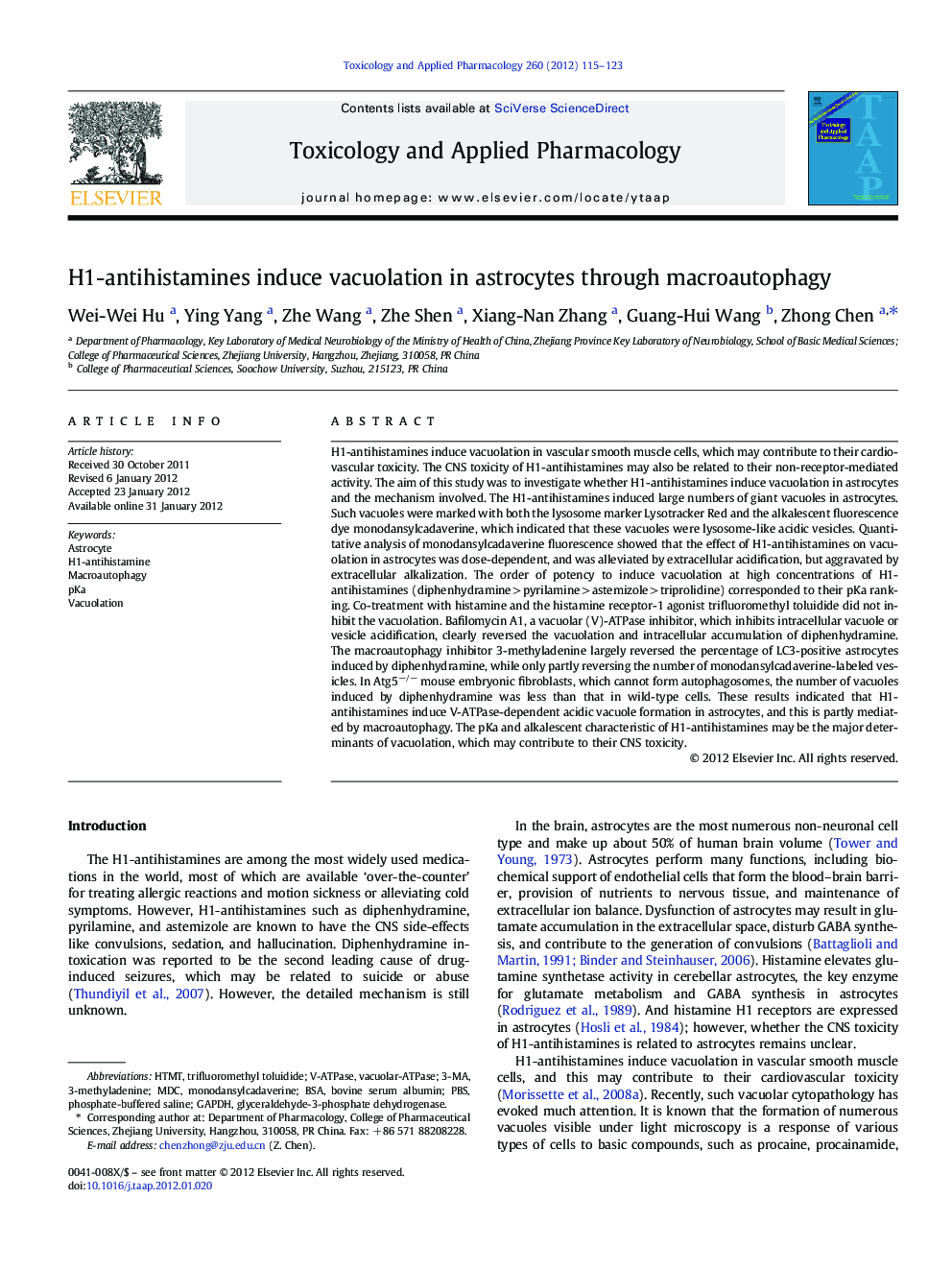| کد مقاله | کد نشریه | سال انتشار | مقاله انگلیسی | نسخه تمام متن |
|---|---|---|---|---|
| 5846794 | 1128514 | 2012 | 9 صفحه PDF | دانلود رایگان |

H1-antihistamines induce vacuolation in vascular smooth muscle cells, which may contribute to their cardiovascular toxicity. The CNS toxicity of H1-antihistamines may also be related to their non-receptor-mediated activity. The aim of this study was to investigate whether H1-antihistamines induce vacuolation in astrocytes and the mechanism involved. The H1-antihistamines induced large numbers of giant vacuoles in astrocytes. Such vacuoles were marked with both the lysosome marker Lysotracker Red and the alkalescent fluorescence dye monodansylcadaverine, which indicated that these vacuoles were lysosome-like acidic vesicles. Quantitative analysis of monodansylcadaverine fluorescence showed that the effect of H1-antihistamines on vacuolation in astrocytes was dose-dependent, and was alleviated by extracellular acidification, but aggravated by extracellular alkalization. The order of potency to induce vacuolation at high concentrations of H1-antihistamines (diphenhydramine > pyrilamine > astemizole > triprolidine) corresponded to their pKa ranking. Co-treatment with histamine and the histamine receptor-1 agonist trifluoromethyl toluidide did not inhibit the vacuolation. Bafilomycin A1, a vacuolar (V)-ATPase inhibitor, which inhibits intracellular vacuole or vesicle acidification, clearly reversed the vacuolation and intracellular accumulation of diphenhydramine. The macroautophagy inhibitor 3-methyladenine largely reversed the percentage of LC3-positive astrocytes induced by diphenhydramine, while only partly reversing the number of monodansylcadaverine-labeled vesicles. In Atg5â/â mouse embryonic fibroblasts, which cannot form autophagosomes, the number of vacuoles induced by diphenhydramine was less than that in wild-type cells. These results indicated that H1-antihistamines induce V-ATPase-dependent acidic vacuole formation in astrocytes, and this is partly mediated by macroautophagy. The pKa and alkalescent characteristic of H1-antihistamines may be the major determinants of vacuolation, which may contribute to their CNS toxicity.
⺠H1-antihistamines induce vacuolar-ATPase-dependent acidic vacuolation in astrocytes. ⺠Vacuolation may be due to the sequestration of H1-antihistamines in astrocytes. ⺠The vacuolation induced by H1-antihistamines is partly mediated by macroautophagy. ⺠The pKa and alkalescent characteristic are the major determinants of vacuolation. ⺠MDC is not a specific marker for macroautophagy, but suitable for vacuolation.
Journal: Toxicology and Applied Pharmacology - Volume 260, Issue 2, 15 April 2012, Pages 115-123